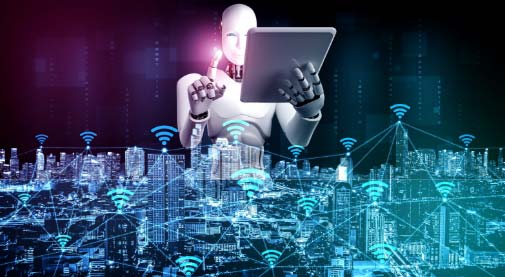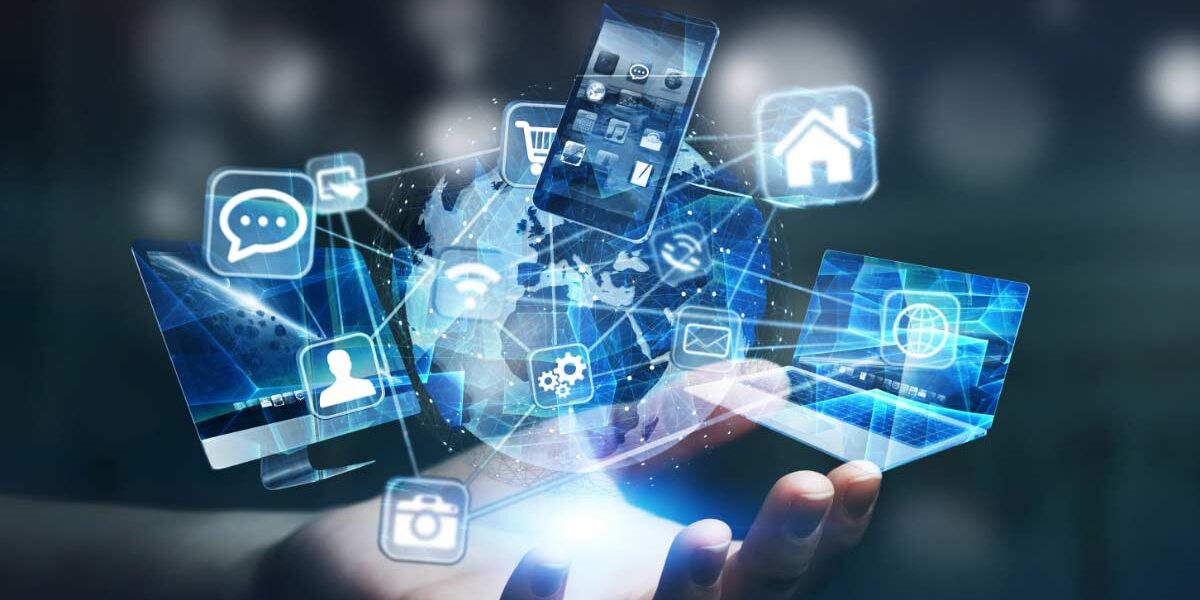As per the IDC forecast, global IoT spending will grow at an 11.3 % Compound Annual Growth Rate (CAGR) throughout 2020-2024. By 2022, the global Internet investing in IoT services will reach the $ 1 trillion mark.
The most current IoT trends reveal that IoT technology has changed the operations of various sectors. IoT and its smart sensors have already paved the road for increased automation in various industries. In the current scenario, increased cloud usage, 5G development, artificial intelligence (AI), edge computing, blockchain, and other technologies are pushing IoT innovations.
The Internet of Things is predicted to be a major disruptor by 2022. The top IoT trends aiming at transforming the world of technology and businesses are listed below.
Cyber Security
Cyber-crime, ransom-ware, cryptojacking, IoT attacks, government-sponsored attacks, and cyber-physical attacks are just a few of the well-known methods for stealing sensitive corporate or personal data. Millions of workers have migrated to remote work due to the epidemic, putting themselves at risk of cyber-attacks due to a lack of effective cyber-protection measures. As more employees move to remote work, cyber security experts and proponents of the IoT (IoT) are bridging the gap with new technologies and IoT security solutions. By 2022, IoT network hacking is predicted to become commonplace. Network operators serving as cyber-security personnel will prevent intruders from causing any harm. Companies that have been cyber-attacked in the past, such as Sierra, Wireless, and others, have incorporated IoT-driven cyber technology. Ericsson, Microsoft, and U-Blox have also made contributions.
Traffic Management
Congestion and traffic delays are great difficulties in any major city worldwide, forcing individuals to spend extra time on the road. Long commutes limit economic production in cities worldwide, making gridlock a serious issue. According to recent IoT trends, IoT technology is most suited to this challenge. Companies are already releasing solutions that use IoT embedded technology in vehicles and traffic systems to build better traffic grids and conduct traffic surveys to eliminate unnecessary traffic and congestion. The Internet of Things makes it easy to communicate between devices and guarantees that everything operates smoothly.
Logistics

The Internet of Things (IoT) facilitates the tracking of assets and the transfer of current data about those assets in the logistics process for people and products. An IoT channel can also be used to control components of the transportation operation remotely. IoT-enabled supply chains now provide two major benefits: improved low-cost performance and higher revenue opportunities. The Internet of Things was one of the first technologies adopted by major corporations. I-powered robots with a built-in camera and QR scanner can swiftly explore the product database and locate the product in the correct location in a repository, resulting in greater efficiency. An IoT channel can also be used to control components of the transportation operation remotely.
Artificial Intelligence (AI)
In 2022, AI is expected to deliver enormous value to businesses. AI has grown at an incredible rate over the last decade. It has been assisting companies and governments with critical processes such as ensuring uninterrupted delivery, social distancing, etc. In the recent period, AI helped to understand the novel COVID-19 Virus and assisted in accelerating the roll-out of the COVID-19 vaccine. Based on customer behavioral data during this significant economic transition, it has been predicted that AI will enable enterprises to promote more effectively to their clients in eCommerce.
Automation
The Internet of Things has proven to be a game-changer in the automation business. It has aided in developing new technologies to solve challenges for the future, improve operations, and boost production. Several papers highlight the usefulness of IoT in business models that have increased output and enhanced company performance and business KPIs. With automation, manufacturers are overhauling their whole business models to become more inventive and productive. Data and analytics are used to find applications in IoT networks. These technologies aid in adopting and optimizing IoT devices, processes, applications, and infrastructure, resulting in improved low-latency network performance.
AR and VR with IoT
Virtual and augmented reality may integrate the physical and digital worlds with IoT services. It paves the way for IoT data to be used in AR and VR applications. The application of IoT in various technologies has several economic benefits, including fewer costs and new and increased profits and opportunities. Combining these technologies could aid firms in teaching employees about virtual prototypes, various sorts of equipment, and various business growth strategies.
Adoption of IoT in Healthcare
The Internet of Things (IoT) is undeniably changing the healthcare business by redefining the area of devices and human contact in healthcare delivery solutions. IoT-enabled devices have transformed remote monitoring in the healthcare sector, empowering physicians to provide excellent treatment to keep patients safe and healthy. Furthermore, remote patient monitoring helps to shorten hospital stays and avoid readmissions. In addition, the Internet of Things has a substantial impact on lowering healthcare expenses and increasing treatment outcomes. In turn, IoT supports care and improves patient outcomes by making the interactions with doctors easier and more efficient.
The Emergence of Smart Cities
IoT and edge computing have revealed enticing research and development (R & R&D) potential for building smart cities due to technological breakthroughs. In some cities in the United States, utilities, parking meters, and traffic signals are already connected to IoT networks. The IoT industry is expected to reach $639.74 billion by 2022. Edge Computing is a type of computing that uses the Internet of Things (IoT). Smart cities will benefit residents in terms of social living standards and economically.
Boost in Customer Service
Customer service and information distribution have both benefited from IoT technology. CRM systems can benefit from IoT by streamlining the sales process, detecting and reporting customer complaints, and improving interdepartmental collaboration. These technologies also allow organizations to participate in customer conversations, which increases customer engagement and retention. During the pandemic, there was a noticeable surge in the use of IoT to impose social distancing measures.
Conclusion
Even though it dates back to 1999, the Internet of Things (IoT) has recently gained a lot of attention from various businesses. It has the potential to be used in future technologies. As the number of IoT devices expands, more creative and innovative ways to use them will emerge. The tendencies highlighted here reveal a lot about what the Internet of Things has in store for us. So keep an eye on the IoT trends discussed here, as well as the ones that will emerge in the next months!!



